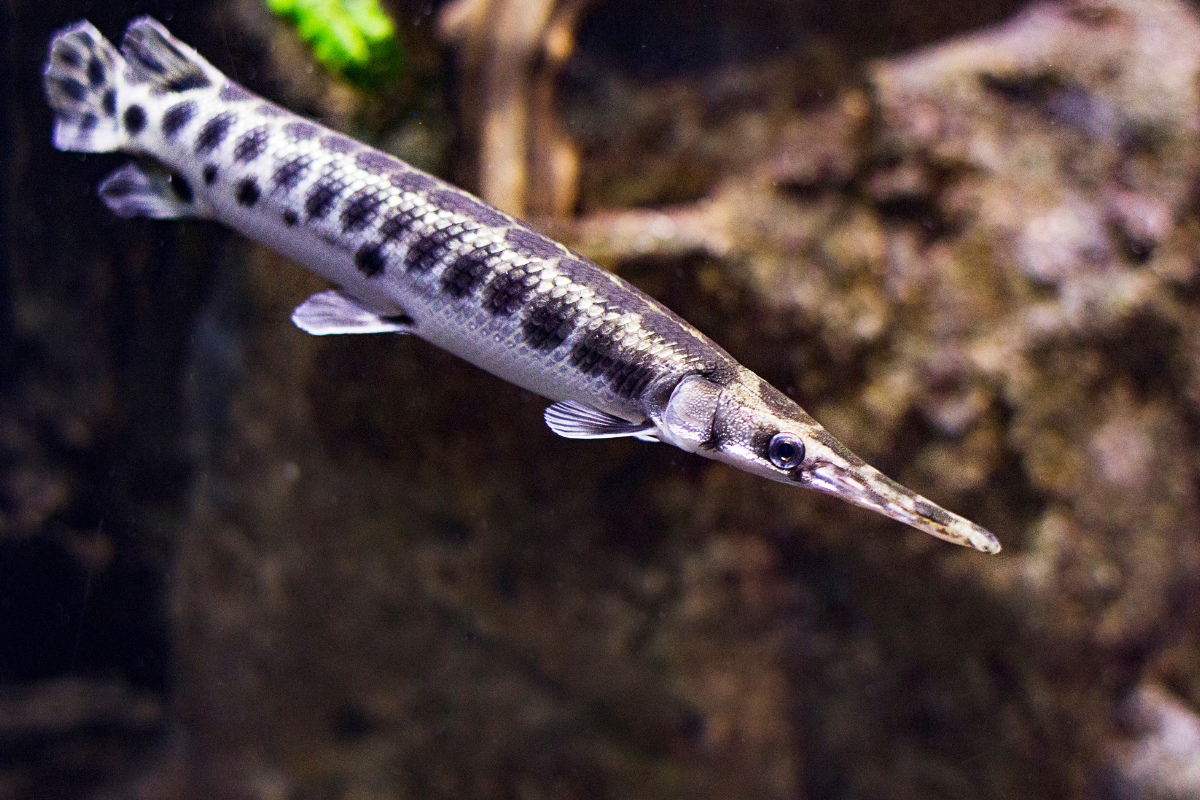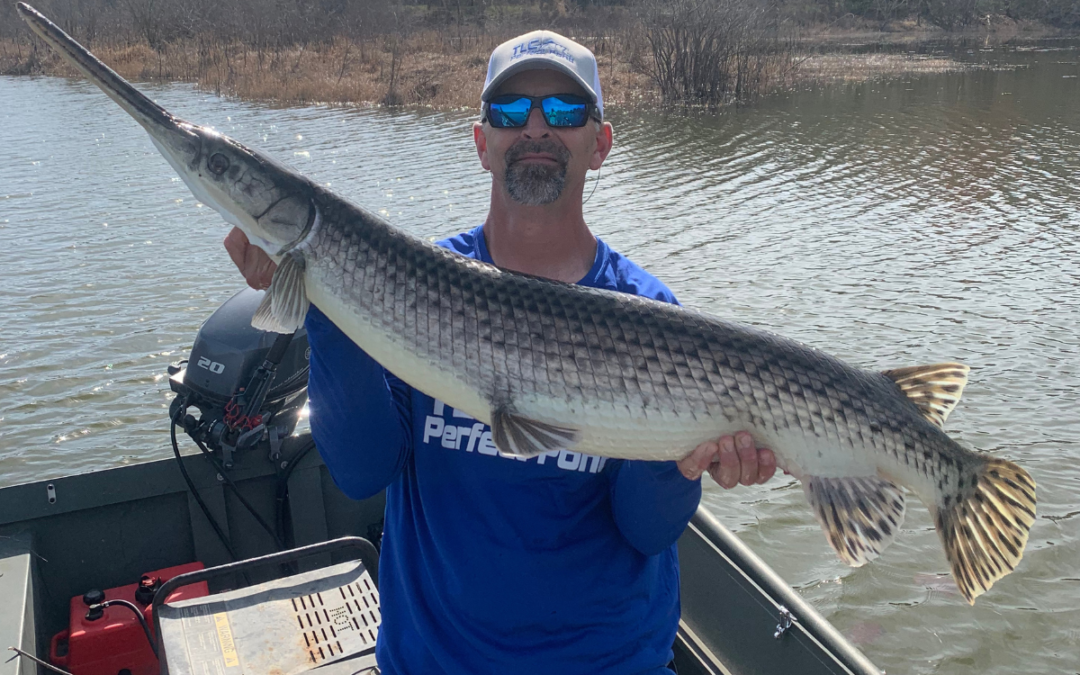Our previous blog discussed the bowfin and its impact on small ponds and lakes. Here we’ll cover another prehistoric fish that is often considered bad for a small pond or lake. We’ll try to clear up some misconceptions about gar and help you decide whether or not you want them in your pond.
There are three species that we see managing ponds in south Georgia and north Florida. These include the Florida Gar (Lepisosteus platyrhincus), the Spotted Gar (Lepisosteus oculatus), and the Longnose Gar (Lepisosteus osseus). As the name would indicate, the Longnose Gar is the larger of the three. Florida Gar and Spotted Gar usually have around the same average length.
Florida Gar are typically found around the Ocklocknee River drainage in Georgia and northward to the Savannah River drainage. Their distribution also extends south through the entire Florida Peninsula. This species tends to congregate in the spring fed rivers of Florida and is a close relative to the Longnose. Florida Gar can be distinguished from Spotted Gar as the Florida species has a shorter snout length.
Spotted Gar are more populous in Alabama, Mississippi, Louisiana, and Arkansas, although some are found in west Georgia. They are typically found in shallow creeks or pools with quiet water. You’ll often see them in the backwater areas of rivers and lakes.
Compared to the other two species mentioned above, Longnose have a much wider distribution that covers a majority of the eastern United States. They can be found in ponds, rivers, and lakes across Georgia and Florida — in the panhandle and peninsula. This species has a long, slender body and can often be found in brackish waters along the coast.

Should You Remove Gar?
Gar will eat invertebrates and fish, but they’re not as voracious as they look. They’re a part of the natural ecosystem in many large lakes where strong bass populations are present. As a result, it doesn’t appear there are any negative effects of having them present in larger bodies of water.
Because they are a predator, they will eat small fish which will include bluegill and juvenile bass. But there’s no solid evidence that suggests a few gar could severely deplete a bass or bluegill population. If the gar were overpopulated, they could inhibit the growth of your sunfish or bass populations. But we rarely see situations where they are overpopulated. We usually just see a few at a time when performing an electrofishing survey on a pond.
If there’s no serious negative effects of gar on the other fish populations in a pond, why do so many pond owners want them removed? Some of this has to do with the fact that many pond owners do indeed believe they are eating all the other fish in the pond. But some pond owners simply don’t want them in their pond.
Although they can be fun to catch for some anglers, other anglers don’t want to hook one of these gnarly fish. They can cut your line or quickly make a mess of your favorite rod and reel. They’re also probably not ideal to have in a pond where kids are regularly fishing.
If all comes down to your personal choice as a pond owner. If you want them removed, they can easily be removed via electrofishing. If you want to preserve some natural diversity in your pond, you can leave them there. Our goal is to educate pond owners so they understand the pros and cons of having certain species in the pond.
Let Up Help Improve Your Pond!
If you’re in the south GA or north FL areas and need help removing undesirable fish species in your pond or lake, complete this form and we’ll contact you to schedule a time to meet. We look forward to turning your pond into a productive fishery for years to come!

